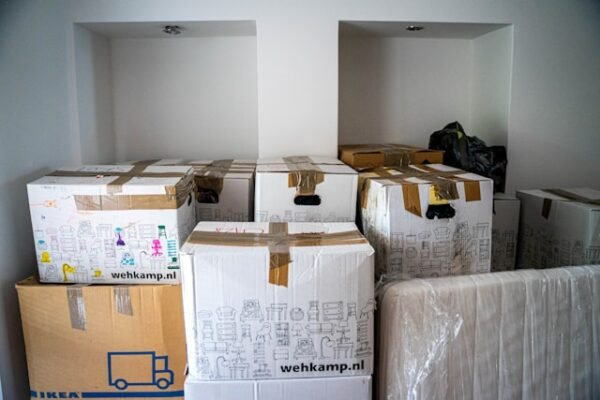Moving homes within or from Havelock, NC, can be a significant life event filled with both opportunities and challenges. As you prepare to transition to a new home, whether it’s across town or across the country, organizing and executing your move efficiently can greatly reduce the stress typically associated with such a big change. This guide is tailored specifically for Havelock residents, offering ten essential tips to streamline the moving process. From effective decluttering to the strategic use of local storage options, we’ll help you manage every aspect of your move, ensuring a smooth and orderly experience from start to finish. Get ready to tackle your move with ease and confidence!
- Start Planning Early
The key to a stress-free move is starting your planning process early. As soon as you know you’ll be moving, begin by creating a timeline of tasks leading up to the move date. Allocate specific weeks for different moving-related tasks such as sorting belongings, finalizing accommodations, and setting up necessary services in your new home. Early planning prevents last-minute rushes and helps ensure you don’t overlook important details.
- Declutter and Use Local Storage
Before you start packing, take the opportunity to declutter your current home. This not only simplifies the packing process but also significantly reduces the load you need to move. Items that haven’t been used for over a year are good candidates to be left behind. Consider donating these items or selling them if they are in good condition. For belongings that are important but not immediately needed, utilizing local storage options can be a smart choice. When it comes to storage Havelock NC offers various solutions to safely store your items until you are ready to integrate them into your new home. This approach keeps your move manageable and your new space uncluttered.
- Invest in Quality Packing Materials
Using the right packing materials can make a significant difference in the safety of your belongings during transit. Invest in sturdy boxes, bubble wrap, packing peanuts, and strong packing tape. Label each box with its contents and the room it belongs in. This will not only protect your items but also streamline the unpacking process, making it quicker and more organized.
- Keep Important Documents Handy
Organize all your important documents, such as contracts, leases, medical records, and school records, well before moving day. Keep these documents in a clearly labeled folder and carry it with you during the move. This ensures you have easy access to crucial information when you need it and prevents these important documents from getting lost in the shuffle.
- Schedule Utilities for Your New Home
Before you move, contact utility providers to set up services like electricity, water, gas, internet, and cable at your new home. Aim to have these services activated the day before you officially move in. This step will ensure that your new home is functional and comfortable from the moment you arrive, allowing you to settle in without any additional stress or discomfort.
- Label Everything Clearly
Labeling cannot be overstressed. Be clear and detailed when marking your boxes. Apart from mentioning the room they belong to, include a brief list of contents and whether items inside are fragile. This will help movers know how to handle each box and will also make unpacking more systematic. You can color-code labels for each room to make identification even easier once the boxes are being unloaded and sorted in your new home.
- Take Photos of Electronic Setups
Before you disconnect any electronic devices, take a few photos of the wiring configurations. This simple step can save you a lot of time and frustration when setting up your systems in your new home. Having a reference makes it easier to reconnect your electronics quickly and correctly, from your television and sound system to your desktop computer setup.
- Pack an Essentials Box
Pack a box or suitcase with essentials you will need immediately upon arrival at your new home. Include items like toiletries, a change of clothes, medications, basic tools, chargers, toilet paper, snacks, and perhaps a few cups and plates. This essentials box should be the last thing loaded into the moving truck and the first thing taken out, so you have easy access to necessary items right when you need them.
- Protect Your Valuables
For items that are particularly valuable or fragile, consider taking extra precautions. Transport these items yourself if possible. This includes legal documents, jewelry, family heirlooms, and other irreplaceables. By handling these personally, you reduce the risk of these items being lost or damaged during the move.
- Plan for Pet and Child Care
If you have young children or pets, moving day can be particularly stressful for them. Consider arranging for a friend or family member to watch them for the day. This not only keeps them safe but also allows you to focus on the move without distractions or worries. Knowing your loved ones are taken care of can ease your mind and let you concentrate on the tasks at hand.
Conclusion: Move with Ease
Moving homes doesn’t have to be a daunting ordeal. With these ten practical tips, from early planning and thorough decluttering to essential labeling and arranging for pet care, you can transform a potentially chaotic day into a smoothly run operation. By preparing effectively, you ensure that both you and your belongings arrive at your new home in good shape, ready to start the next chapter of your life with positivity and organization. Remember, the key to a hassle-free move is in the details—plan ahead, stay organized, and approach each step with a clear strategy. Here’s to a successful move and an exciting new beginning in your new home!












